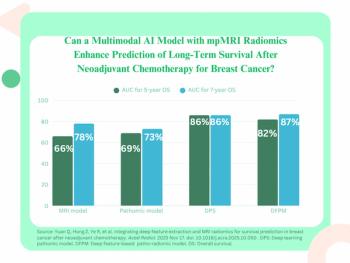
Europeans urge caution with all gadolinium agents
Europeans are advised to follow steps outlined in the U.S. to prevent a life-threatening skin condition linked with gadolinium-enhanced MRI or MR angiography, according to a new editorial in European Radiology. The article stresses the importance of caution in high-risk patients for all gadolinium agents, not just the ones that have been associated with reactions, because the condition’s causes are still unclear.
Europeans are advised to follow steps outlined in the U.S. to prevent a life-threatening skin condition linked with gadolinium-enhanced MRI or MR angiography, according to a new editorial in European Radiology. The article stresses the importance of caution in high-risk patients for all gadolinium agents, not just the ones that have been associated with reactions, because the condition's causes are still unclear.
After gadolinium-enhanced MRI or MRA, patients with moderate to severe kidney disease may develop nephrogenic systemic fibrosis (NSF), a rare disease that can result in loss of mobility and death.
The European Radiology editorial, published online April 26, directs radiologists to the preventive approach outlined in March by physicians at Yale University and the University of Pittsburgh (Kuo et al. Radiology 2007;242:647-649). Among other things, the Kuo article advises use of alternative imaging studies where possible for high-risk patients and against administration of gadodiamide (Omniscan) to patients with any history of renal disease. The editorial also advises immediate hemodialysis for patients already on hemodialysis after a gadolinium-enhanced study.
In contrast, the European Medicines Agency, the European equivalent of the FDA, has advised that Omniscan is contraindicated in cases of severe renal disease and does not recommend hemodialysis after a contrast-enhanced study. This guidance appears to be based primarily on one key study that showed hemodialysis did not prevent NSF in three patients undergoing MRI with a double dose of Omniscan (AJR 2007;188:1-7). Delayed hemodialysis could explain why a protective effect was not shown, according to U.S. sources.
"The study on which the advice was based is way too small to draw the conclusion that it [hemodialysis] does not protect, let alone to recommend against it. In the absence of larger studies, we should eliminate gadolinium from the body ASAP, and we know that hemodialysis effectively does this. Therefore, the EMEA advice does not make sense," said Dr. Tim Leiner, one of the study's authors, in response to an e-mail inquiry from Diagnostic Imaging.
Five gadolinium-containing contrast agents are FDA-approved for use during MRI: Omniscan, OptiMARK, Magnevist, ProHance, and MultiHance. None is FDA-approved for MRA, which typically requires a higher dose, but they are all used on an off-label basis.
The majority of cases of NSF have been linked to Omniscan, and some have also been reported for Magnevist and OptiMARK. An article published by Sadowski et al in April (Radiology; 243:148-157) included a case in which both Omniscan and MultiHance were administered.
The European Radiology editorial notes that no known NSF cases have been associated with certain agents distributed in Europe: Gadovist, Vasovist, Primovist, ProHance, or Dotarem. Leiner points out, however, that there are huge differences in the number of administrations for the various agents. Magnevist has been given to more than 45 million patients and has been associated with a small number of NSF cases. Omniscan has been administered to about 33 million.
"The agents that have not been associated with NSF are not necessarily safe. The fact that no cases of NSF have been associated with them may simply reflect the lower number of administrations," Leiner said.
New studies have shed light on the pathogenesis of NSF, but the results are inconclusive.
"Despite the fact that at present not all gadolinium-based contrast agents have been associated with NSF, it is paramount that these agents be used with caution in patients with renal insufficiency," the editorial said.
The editorial also highlights the results of a large new retrospective Scottish study of 1826 patients that linked cumulative gadolinium dose with NSF in high-risk patients (Collidge et al. Radiology, in press).
"We found a significant association with gadolinium-enhanced MRI exposure and NSF, as well as a significant association between dose of gadolinium and NSF," said study author Dr. Giles Roditi, who presented results at the 2007 European Congress of Radiology meeting in Vienna in March.
For more online information, visit Diagnostic Imaging's
For more information from the Diagnostic Imaging archives:
Newsletter
Stay at the forefront of radiology with the Diagnostic Imaging newsletter, delivering the latest news, clinical insights, and imaging advancements for today’s radiologists.




























